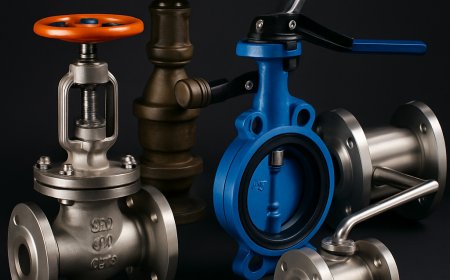The Future of Window Cleaning: Robotic Window Cleaners
The Future of Window Cleaning: Robotic Window Cleaners
In our fast-paced, technology-driven world, automation is increasingly making its way into everyday household chores. One of the most recent innovations in home maintenance is the robotic window cleaner, a device designed to simplify the laborious task of cleaning windows. Whether you're a homeowner or a business owner, robotic window cleaners offer convenience, safety, and efficiency. This article will explore the benefits, functionality, and features of robotic window cleaners, along with how they can make your life easier.
What Is a Robotic Window Cleaner?
A robotic window cleaner is an automated device designed to clean the exterior and interior of windows without human intervention. These gadgets use a combination of sensors, suction, and specialized cleaning pads to navigate glass surfaces and remove dirt, dust, and grime. Robotic window cleaners typically work on glass windows of various sizes and are even suitable for high-rise buildings, providing a safe and effective alternative to traditional window cleaning methods.
These devices often consist of a small motorized unit that clings to the window using powerful suction technology. The cleaner moves up and down, across the windows surface, and sometimes even in intricate patterns, depending on the complexity of the glass. Many models come equipped with smart features that allow users to control the cleaning process via smartphone apps, adding a level of convenience.
Benefits of Robotic Window Cleaners
1. Time-Saving and Efficiency:
One of the most significant advantages of robotic window cleaners is their time-saving capabilities. Instead of spending hours manually scrubbing windows or waiting for a professional cleaner to arrive, the robotic cleaner works autonomously, allowing you to focus on more important tasks. These devices are designed to clean quickly and efficiently, covering large areas of glass in a fraction of the time it would take to clean by hand.
2. Enhanced Safety:
Traditional window cleaning can be risky, especially for high-rise buildings or windows located in hard-to-reach areas. Window cleaners often need to use ladders, scaffolding, or even suspended platforms to access these areas, which increases the likelihood of accidents. With robotic window cleaners, the danger of falling or using hazardous equipment is eliminated. The robot is designed to safely cling to the glass surface, and most models have built-in safety features like emergency power-off functions and anti-drop sensors.
3. Consistent Results:
Unlike human window cleaners, robotic cleaners are programmed to follow specific cleaning patterns, ensuring consistent and thorough results every time. These robots use advanced algorithms and sensors to detect dirt and debris on the surface, adjusting their movements as needed to ensure an even and thorough clean.
4. Cost-Effective in the Long Run:
Though the initial investment for a robotic window cleaner can be higher than hiring a professional cleaning service, it can save money over time. The cost of professional window cleaning services can quickly add up, especially if you need frequent cleanings. A robotic window cleaner offers a one-time cost, and after that, the maintenance costs are relatively low. With minimal upkeep required, the device can continue to clean your windows for years.
5. Convenient Smart Features:
Many robotic window cleaners are designed with smart features that enhance the user experience. Most can be controlled via smartphone apps, which allow users to start, stop, or schedule cleaning sessions remotely. Some automatic window cleaner advanced models even include voice control compatibility with devices like Amazon Alexa or Google Assistant. These smart features add an additional layer of convenience, making it easy to keep your windows sparkling clean at the touch of a button.
How Robotic Window Cleaners Work
Robotic window cleaners operate using several advanced technologies that enable them to clean effectively and autonomously. Heres how they work:
1. Suction Technology:
The primary method by which robotic window cleaners stay attached to windows is through suction. Powerful suction fans create a vacuum that keeps the robot firmly in place, even when cleaning large windows or high-rise glass surfaces. This suction also allows the cleaner to maintain a stable position while moving across the glass, preventing it from falling or losing grip.
2. Navigation Sensors:
Robotic window cleaners use various sensors (such as ultrasonic, laser, and proximity sensors) to navigate the windows surface. These sensors help the robot detect obstacles, edges, and the size of the window, allowing it to move efficiently across the surface. Some models even have smart mapping capabilities, enabling the robot to clean windows in specific patterns and avoid missing any spots.
3. Cleaning Pads and Brushes:
Robotic cleaners come with soft cleaning pads or microfiber brushes that gently scrub the surface of the glass. These pads help to remove dust, dirt, fingerprints, and other contaminants without scratching the glass. Many devices feature rotating or oscillating brushes to improve cleaning performance.
4. Water and Cleaning Solution:
While some models require users to apply cleaning solution manually, others are equipped with built-in water tanks and automatic solution dispensers. These cleaners can spray water or cleaning liquid onto the surface to loosen dirt and grime, making the process more effective.
Types of Robotic Window Cleaners
1. Corded Models:
Corded robotic window cleaners are connected to a power outlet, which ensures continuous power during operation. These models tend to have stronger suction power and are ideal for larger windows. However, the cord may limit the cleaning area, so it's important to choose a cord length that suits your window setup.
2. Cordless Models:
Cordless robotic cleaners are powered by rechargeable batteries, providing more flexibility and mobility. These models are ideal for homes and smaller buildings but may require recharging after every cleaning session.
3. Hybrid Models:
Some models offer a hybrid approach, providing both corded and cordless options. These versatile devices combine the convenience of battery-powered cleaning with the consistent power of corded operation.
Conclusion
Robotic window cleaners are a breakthrough in home automation, offering a smart, efficient, and safe solution for window cleaning. With their advanced features and impressive capabilities, these robots are making life easier for homeowners and businesses alike. Whether you're looking to save time, enhance safety, or reduce long-term costs, investing in a robotic window cleaner is a step toward modernizing your cleaning routine. As technology continues to improve, these devices will only become more sophisticated, making window cleaning a hassle-free task for everyone.



































